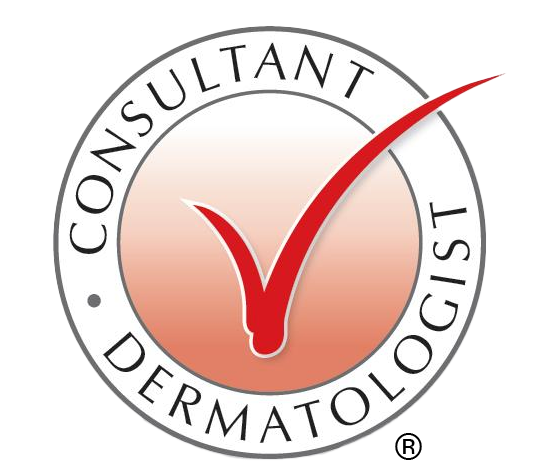Dermatology Departments
Our Lady’s Children’s Hospital Crumlin
History
Our Lady’s Children’s Hospital has provided dermatology care to the children of Ireland since its foundation in 1956. Count Harry Vianni was the hospital dermatologist from 1956 until 1988. During that period Dermatology had its own ward, St Roch’s Ward, in addition to a busy outpatient service. Following Count Vianni’s retirement there was a hiatus of 4 years before the appointment of Dr Rosemarie Watson in March 1992 as Consultant Dermatologist. This was followed by the appointment of consultant dermatologists Professor Alan Irvine in 2002, Dr Grainne O’Regan(also a consultant paediatrician) in 2012 and Dr Fiona Browne in February 2015.
The department is currently also staffed by 2 registrars (1 dermatology and 1 paediatric), 1 senior house officer, 4 full time equivalent clinical nurse specialists, 1 research nurse and 2.6 whole time equivalent administrative staff. Funding by the HSE for the National Epidermolysis Bullosa Service has also provided the department with a dedicated nutritionalist, social worker ,psychologist ,physiotherapist and occupational therapist .
In 1992 a total of 1200 outpatients were seen. This number has increased to 7,600 outpatients in 2014 with an increase of 23% from 2010 to 2014 . In addition the department oversees 400 day cases and 400 admissions and consultations per year.
Clinics
The department provides;
- Four outpatient clinics per week with nurse led clinics held conjointly during these clinics
- One joint consultations clinic per month in conjunction with University Children’s Hospital, Temple Street, Dublin (CUH), AMNCH, St Vincent’s Hospital and St James Hospital
- One monthly multi disciplinary Joint Vascular birthmark clinic attended by dermatologists N=3, plastic and reconstruction surgeons N=2, occupational therapist N=1,and interventional radiology N=3.
- There is a monthly Ichthyosis clinic and monthly Systemic Therapy clinic
- Monthly Epidermolysis Bullosa multi disciplinary clinics
- Multi disciplinary Connective Tissue clinic with rheumatology every 3 months
- Thermography every 3 months
- Multi disciplinary Genetics conference every 6 months
Other Outpatient Services
- Emergency drop in service
- Emergency biopsy service
- Consultation service to the Coombe Hospital and The National Maternity Hospital
- Outreach nurse visits for patients with Epidermolysis Bullosa
- Skin prick testing, patch testing
- Phototherapy
- Camouflage
- Clinical photography
- Thermography
- Supervision and monitoring of systemic therapies
Inpatient services
The department has approximately 60 admissions per year with an approximate length of stay 4.5 days. In addition there is active inpatient consultation service to another 350 patients per year.
Day cases
There are approximately 400 day case admissions for surgical procedures which are predominantly laser therapy admissions. The department has a pulsed dye laser, alexandrite laser and nd:yag laser to cover the different needs of the paediatric population. Lasers in younger children are done under general anaesthetic and there is a separate local anaesthetic list for older children requiring vascular or hair lasers. In addition the department offers a sclerotherapy service for children with Vascular Malformations led by Dr Mark Ryan, Interventional Radiologist. The day unit also accommodates infants starting propranalol therapy for haemangiomas and children with morphoea who require pulsed methylprednisolone therapy.
Call
The consultants deliver 24/7 on-call, currently through a one-in-three on-call rota.
Academics
The department provides undergraduate and postgraduate teaching in addition to electives for visiting and international fellows.
The department is very actively engaged in clinical and bench research under the supervision of Professor Alan Irvine and is a world leader in the study of the genetics of atopic dermatitis. The OLCHC eczema/atopic dermatitis collection of patients is the largest resource in the world for the genetics of childhood eczema and has been used for several key discoveries in this field. This research work is supported by over 3 million euro of current funding through several grants including those from the Health Research Board, The Wellcome Trust and the National Children’s Research Centre. To date 3 students have received PhD degrees based on research in our department.
Meetings
The department holds an annual meeting in conjunction with the Royal Academy of Medicine of Ireland at which international speakers focus on the spectrum of paediatric dermatology. The meeting will celebrate its 10th year in 2015.
Department Links
The department is housed on the second floor of the medical tower in OLCHC, in close proximity to Allergy, Immunology and Infectious disease allowing for regular side-by-side allergy and infectious disease clinics. The department also has regular links with dermatopathology and radiology in OLCHC. The department has a close relationship with paediatric dermatology colleagues at Children’s University Hospital and Dr Grainne O’Regan also leads the paediatric dermatology clinics in The National Children’s Hospital, Tallaght. Transition care is organised with the paediatricians and dermatologist close to home.
Waiting Lists
Waiting lists continue to be a challenge with 200 patients per month being referred in the last quarter of 2014. Urgent cases are seen as required.
Summary
The sub speciality of paediatric dermatology has evolved in an exponential fashion in the last two decades. Our department has expanded accordingly and we are proud of the multidisciplinary services we can now offer. We also have international recognition as a leading academic centre.
We are delighted to note that plans are well advanced for the move of the three Dublin paediatric hospitals to The National Children’s Hospital at St James Hospital Dublin in 2020. Our current close links with St James Hospital will serve us well during the transition period.



